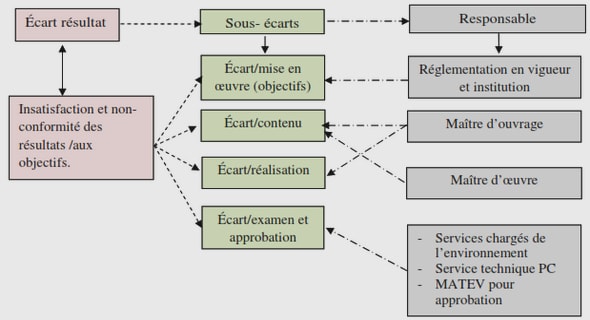Sommaire: Essays on economic fluctuations, growth and the labor market performance, the Impact of Tax/Benefit Systems
1 The canonical international real business cycle model
1.1 The model
1.1.1 The representative Firm
1.1.2 The representative household
1.1.3 General Equilibrium
1.2 Empirical results
1.2.1 Solution and simulation of the model
1.2.2 Qualitative Analysis
1.2.3 Quantitative Properties
1.2.4 Sensibility analysis
1.3 Conclusions
2 A survey on international real business cycles and the labor market
2.1 National Specialization
2.1.1 Firms
2.1.2 Households
2.1.3 General Equilibrium
2.1.4 Qualitative Analysis
2.1.5 Quantitative Properties
2.1.6 Restricted Asset Markets
2.2 The two-sector economy
2.2.1 Households
2.2.2 Firms
2.2.3 Equilibrium
2.2.4 Empirical results
2.3 Labor market search economies
2.3.1 National specialization
2.3.2 The single good economy
2.3.3 Empirical results
2.4 Conclusion
3 Tax/Bene¯t system and labor market search: reconciling the standard separable preferences with the real wage dynamics and the international business cycles
3.1 The Model
3.1.1 Labor market °ows
3.1.2 Households
3.1.3 Firms
3.1.4 Government
3.1.5 Nash bargaining
3.1.6 Equilibrium
3.2 Empirical results
3.2.1 Parameterization
3.2.2 Models evaluation
3.3 Conclusion
4 Growth, Unemployment and Tax/Bene¯t system in European Countries
4.1 Empirical Analysis
4.1.1 The data
4.1.2 Growth and Unemployment at a regional level: a descriptive analysis
4.1.3 Recovering the missing link: an econometric analysis
4.2 The model
4.2.1 Preferences
4.2.2 Goods sector
4.2.3 R&D sector
4.2.4 Government
4.2.5 Wage bargaining and labor demand
4.2.6 Equilibrium
4.3 The impact of labor market institutions on growth and unemployment
4.3.1 Labor market policies
4.3.2 The wage bargaining processes
4.4 Conclusion
5 Explaining the evolution of hours worked and employment across OECD countries: an equilibrium search approach
5.1 Stylized Facts
5.2 Walrasian growth model
5.2.1 When only the intensive margin is endogenous
5.2.2 When only the extensive margin is endogenous
5.3 Search model with intensive and extensive margins
5.3.1 The equilibrium matching model
5.3.2 Calibration and data
5.3.3 Empirical results
5.4 Conclusion
A Appendix to chapter 1
A.1 Sensitivity analysis of the instantaneous elasticities
B Appendix to chapter 2
B.1 National specialization economy
B.2 Two-sectors economy
C Appendix to chapter 4
C.1 Proofs
D Reaching the Optimal Growth:
Which is the role of the Labor Market Institutions?
D.1 The model
D.1.1 Preferences
D.1.2 Good sector
D.1.3 R&D sector
D.1.4 Government
D.1.5 Wage bargaining and labor demand
D.1.6 Equilibrium
D.1.7 The optimal economic growth
D.1.8 Equilibrium growth v.s. optimal growth
E Appendix to chapter 5
E.1 Data
E.2 The Hansen-Rorgerson economy by country
Extrait du mémoire essays on economic fluctuations, growth and the labor market performance, the Impact of Tax/Benefit Systems
Chapter 1: The canonical international real business cycle model
Introduction
This chapter is attempted to set up the basis of our study on international °uctuations and the labor market. To this end, we expose the properties of an international general equilibrium model in which all markets are assumed to be walrasian and °uctuations are solely driven by stochastic technological impulsions. The detailed analysis of this framework, that we regard as the canonical international real business cycle (thereafter, IRBC) model, let us identify its limits and is essential to appreciate the empirical relevance of each new hypothesis incorporated along the subsequent chapters.
This chapter is as well a methodological one. We present the standard solution method, and we conduct several sensitivity analysis to get a better understanding of the basic mechanisms at work. This let us assess the role played by two key parameters: the ¯rst one related to the adjustment costs of capital, and the second one to the elasticity of labor. Moreover, at each time we compare the results obtained from two speci¯cations of the agents’ preferences. The¯rst one assumes a standard separability between consumption and leisure, whereas the second one assumes a non-separability between them.
Since there is a single good, international trade takes place only to smooth consumption and to ensure that capital is allocated in the most productive country. We show that, regarding the international context, the canonical IRBC model is able to reproduce two characteristics of developed economies:
* The net exports and the trade balance (measured as the ratio of net exports to output) are counter-cyclical.
* Saving and investment rates are highly correlated.
However, the model is unable to replicate two major facts of developed economies:
* Interdependency (Baxter 1995): the cross correlations for production, consumption, investment and labor input are positive across countries.
* (Backus, Kehoe, and Kydland 1995) The cross-country correlation of outputs is larger than the one of consumptions.
Moreover, regarding within country business-cycle facts, the striking limits of the model concern, as its close-economy counterpart, the labor market °uctuations:
* The dynamics of the hours worked is not reproduced by the model.
* The real wage is highly pro-cyclical in the model, conversely to the data.
In addition, due to the single-good nature of the canonical model, the facts involving international prices, such as the terms of trade or the real exchange rate, are obviously left unexplained.
1.1 The model
The world economy consists of two countries (country 1 or home country and country 2 or foreign country), each represented by a large number of identical consumers and a production technology. The countries produce the same ¯nal good, which is used for consumption and investment purposes, and their preferences and technologies have the same structure and parameter values. Although, the technologies di®er in two important aspects: in each country, the labor input consists only of domestic labor, and production is subjected to idiosyncratic shocks to productivity.
Markets are complete: agents may trade any contingent claims they wish.
Since there is a single good, international trade takes place only to smooth consumption and to ensure that capital is allocated in the most productive country.
……..
Essays on economic fluctuations, growth and the labor market performance, the Impact of Tax/Benefit Systems (1.79 MB) (Rapport PDF)
